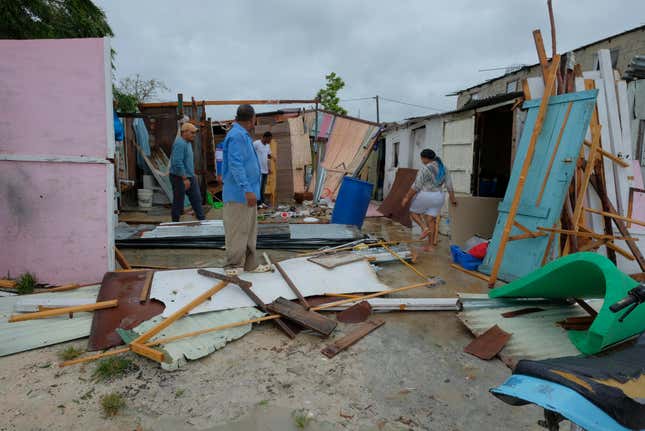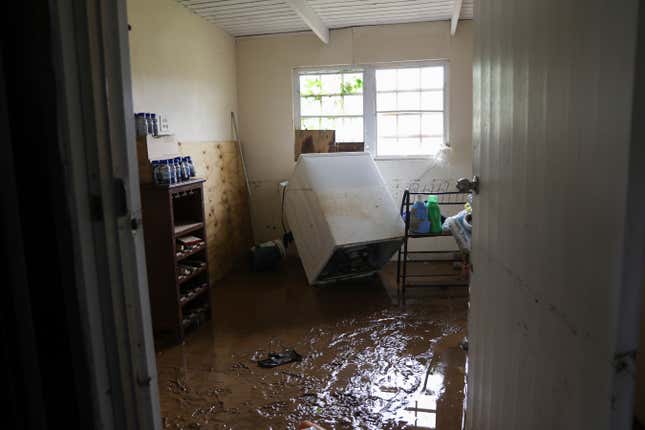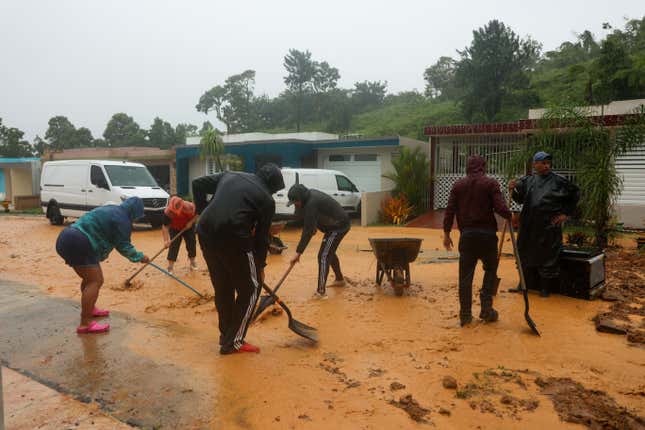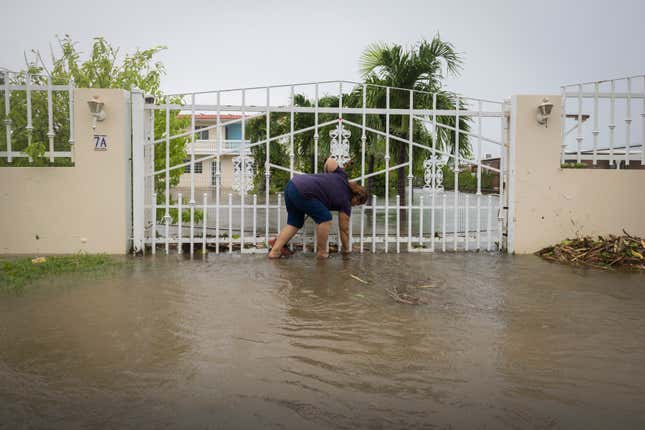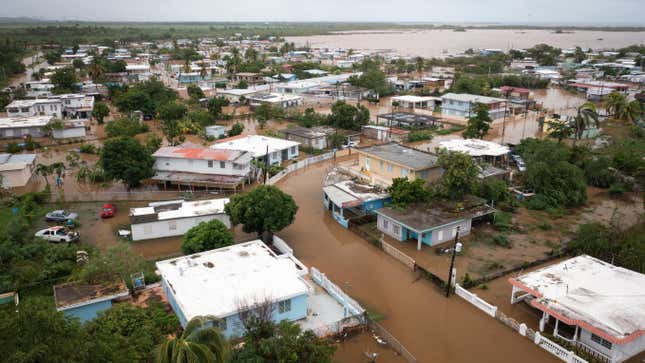
Hurricane Fiona is continuing on its deadly and destructive path as a strengthened, Category 3 storm. The hurricane, currently centered near Turks and Caicos, killed at least two people in Puerto Rico, the island’s Governor Pedro Pierluisi said on Monday, according to reporting from the Washington Post and CNN.
The storm previously killed one other in Guadeloupe and a fourth death has been attributed to Fiona in the Dominican Republic, where the hurricane made landfall on Monday.
As of Tuesday, millions of people in Puerto Rico remained without power and clean water, following the devastation of the storm’s winds and heavy rain. The hurricane tore across the island on Sunday, and bands of severe weather lingered through Monday afternoon. Large areas of Puerto Rico received more than 20 inches of rain, and some spots, including the island’s second largest city, Ponce, were hit with more than 30 inches.
760,923 households, or 60% of Puerto Rico Aqueduct and Sewer Authority’s customers, have no water service, according to the official emergency portal system.
More than 1.17 million households, about 80%, are still without electricity. It’s an outage that LUMA—the island’s controversial recently established private power company—has said will likely last for days in some areas. LUMA announced Tuesday afternoon that it had so far restored electricity to 300,000 customers, including some major hospitals.
Widespread flooding persists as rivers remain swollen. “I’ve never seen anything like this,” National Guard Brigadier General Narciso Cruz, told the Associated Press. “There were communities that flooded in the storm that didn’t flood under Maria.”
Hurricane Maria made landfall in Puerto Rico five years ago, killing thousands of people and decimating the U.S. territory’s infrastructure. In the half decade since, the island still hadn’t fully recovered, reckoning with debt, bankruptcy, an unreliable power grid, and stalled reconstruction efforts.
And the lingering effects of slow and inadequate U.S. investment and assistance have left Puerto Rico additionally vulnerable to subsequent extreme weather events. Thousands were still living in houses severely damaged by Maria, with blue tarps in lieu of stable roofs, as Sunday’s hurricane hit. Following Fiona, at least 1,300 people spent the night in shelters after having been evacuated from their homes, according to the AP.
Fiona was the first major storm (as defined by the National Hurricane Center) to make landfall in an unusually quiet Atlantic hurricane season. The storm is forecast to continue to strengthen as it heads towards Bermuda as a Category 4 hurricane. It is also projected to make landfall in Newfoundland and Nova Scotia in Canada this weekend.

